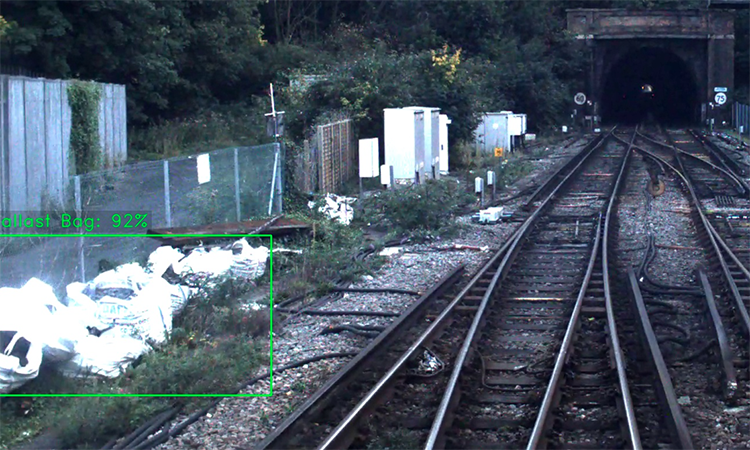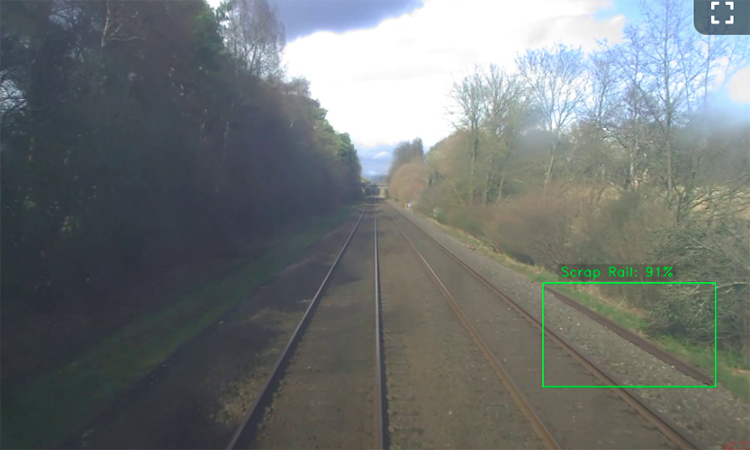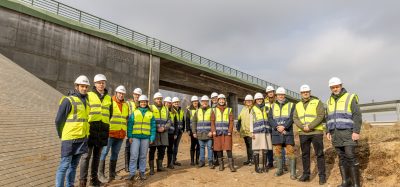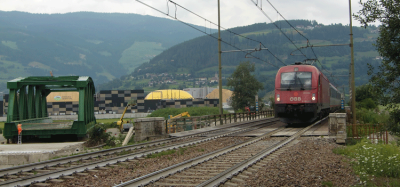Network Rail use video and AI technology to keep the railway clean and safe
Posted: 23 June 2023 | Elliot Robinson (Editorial Assistant - Global Railway Review) | No comments yet
Artificial intelligence software is helping Network Rail find and remove forgotten scrap materials from the side of the railway more quickly and safely than ever before.


Credit: Network Rail
Network Rail Southern region is spearheading a trial of One Big Circle’s video and AI technology to locate old railway kit that can either be re-used or recycled, reduce the risk of injury to colleagues from slips, trips and falls, and tidy up the railway at the same time.
The technology captures high-definition train’s-eye-view video – known as Automated Intelligent Video Review (AIVR) – from across the rail network, with the footage instantly accessible in the cloud. The footage is then analysed by AI to find scrap rail, sleepers and bags of ballast and map their locations using GPS, enabling maintenance teams to plan how and when to safely remove the items.
“Technology such as AIVR provides Network Rail with a brilliant opportunity to improve how efficient we are as a business,” Wayne Cherry, Network Rail Senior Innovations Engineer, said. “While AIVR is already in use across other parts of Network Rail, this will be the first time this technology has been used in this way with AI and could be a real game-changer. “Not only is scrap on the side of the railway unsightly, but it can also become an obstacle during planned engineering work, block safe walkways or delay our teams accessing part of the railway infrastructure to make repairs during disruption. If we can become safer and more efficient with identifying and removing scrap material, it will not only help our colleagues stay safe, but benefit the wider rail industry, passengers and the taxpayer.”


Credit: Network Rail
The project is currently being trialled on the Wessex route – which is one of the busiest on the rail network, taking in all or part of the counties of Surrey, Berkshire, Hampshire, Dorset, Devon, Somerset and Wiltshire – before looking to roll it out more widely.
In addition to helping improve efficiency, the new technology also has safety and financial advantages. On Network Rail’s Wessex route, ‘slips, trips and falls’ are the largest causes of injury and scrap on the side of the track is a significant hazard, particularly as most work happens during darkness.
“We are delighted to be working in partnership with One Big Circle on this exciting project,” Martyn Shaftoe, Health and Safety Advisor for Network Rail’s Wessex route, said. “I believe this technology will play an important role in helping keep our front-line colleagues safe, help us become more efficient in locating and removing scrap, as well as improving the overall condition of the railway for the benefit of our passengers and local residents. Unfortunately, over recent years, the railway has become somewhat of a dumping ground for discarded railway sleepers, scrap rail, redundant ballast bags and many other assets. The challenge we face is there is no definitive list of where these materials or assets are. The prospect of accurately locating scrap material using high-definition video footage and AI without the need for colleagues to walk along the railway is a huge safety improvement opportunity.”
Financially, not only can some of the scrap material be recycled and any money accrued used to support running of the railway, but some of the leftover materials are also reusable. For example, Bomac concrete sleepers are no longer manufactured, but there is still a demand for them as replacements on sidings and on some stretches of track. Thanks to this technology, 40 of these sleepers have been identified on a site between Yeovil and Weymouth where they can be recovered and stored for future use across the business, preventing the need to buy costly new equivalents.
Related content you will enjoy:
Q&A with Network Rail’s Simon Kendler: Diversity and inclusion in rail
Images: Network Rail finish reliability upgrade on Norfolk and Suffolk rail lines
Related topics
Artificial Intelligence (AI), Infrastructure Developments, Regulation & Legislation, Track/Infrastructure Maintenance & Engineering








